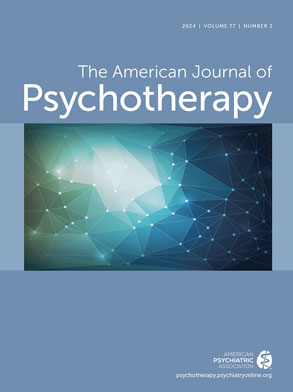Does Manualized Psychodynamic Psychotherapy have an Impact on Youth Anxiety Disorders?
Abstract
Introduction
Method
Therapy
| Anxiety Disorder Features | Dynamic Theory in CAPP | Target Symptoms and CAPP Strategies |
|---|---|---|
| Social Phobia | Extreme self consciousness and fears of embarrassing oneself are linked to conflicted wishes to be the center of attention and laced with guilt and self-punishment; normal desire for attention feels unacceptably aggressive, linked to fears of abandonment | Explore defenses against conflicted wishes to stand out, patients’ overly critical evaluation of others as entrée to connections with uncomfortable competitive wishes and conflicted, unacceptable aggression. |
| GAD | Extreme inability to relax, hypervigilance, and dread of many life situations arises from conflicts related to personal meanings of curiosity and exploration of new situations; normal curiosity and desire for exploration is associated with feeling dangerously alone, out of control and overwhelmed. | Focus on terror of internal urges, including aggression and conflicted desire for autonomy. Emerging fantasies actively connected with symptoms and persistence of anxiety. |
| Separation Anxiety | Severe, developmentally inappropriate separation distress arises from conflicts between normal strivings for autonomy and concerns about hurting or infuriating the emotionally-needed parent. Clinging to parent leads to anger at parent and self; normal strivings for autonomy are associated with feeling unacceptably lonely and frighteningly rejecting of the parent. | Explore transference, an emotionally vibrant paradigm for understanding and altering separation fears. Intensity (2x/week) and brevity (12 weeks) are key CAPP aspects making decoding emotional significance of termination central to the final third of treatment. |
| Anxiety re.establishing age appropriate autonomy, common to these disorders | Conflicts and fears about normal autonomy (i,e. growing wish to manage by oneself, curiosity and independence) common in SP, GAD, and SAD patients emerge in transference. Assertiveness (seeking attention, exploring and attempts at independence), perceived as destructive anger, creating conflict. | CAPP focus on transference highlights conflicts about autonomy, especially as incorporated into fantasies of bodily harm; sense of inadequacy is experienced as physical anxiety and symptoms. |
| Comorbid depression-when present | Conflicted aggression leads to guilt and negative self-evaluation, depressive symptoms, and somatic anxiety | CAPP focus on conflicted aggression detoxifies and helps patient redirect it, improving autonomous function and assertion. Mitigates guilt, with improvement in autonomy, negative views of self improve. |
Therapists
Patients
Results
| ID | time | ADIS-GAD | ADIS-SP | ADIS-SAD | ADIS-DD | ADIS-PTSD | ADIS-PD | ADIS-Ag |
|---|---|---|---|---|---|---|---|---|
| 1 | pre | 6 | 5 | 4 | ||||
| post | 1 | 2 | 4 | |||||
| f/u | 2 | 0 | 1 | |||||
| 2 | pre | 6 | 5 | 4 | ||||
| post | 3 | 4 | 0 | |||||
| f/u | 0 | 0 | 0 | |||||
| 3 | pre | 4 | 4 | 3 | 3 | |||
| post | 1 | 0 | 1 | 0 | ||||
| f/u | 0 | 0 | 0 | 0 | ||||
| 4 | pre | 5 | 4 | 3 | ||||
| post | 3 | 2 | 1 | |||||
| f/u | 0 | 1 | 0 | |||||
| 5/dropout | pre | 4.5 | ||||||
| post | dropout | |||||||
| f/u | ||||||||
| 6 | pre | 5.5 | 2 | |||||
| post | 2 | 1 | ||||||
| f/u | 2 | 1 | ||||||
| 7 | pre | 5 | 5.5 | 4 | ||||
| post | 0 | 1 | 0 | |||||
| f/u | 0 | 0 | 0 | |||||
| 8 | pre | 7 | 4 | 4 | 6 | |||
| post | 1 | 0 | 2 | 0 | ||||
| f/u | 1 | 0 | 1 | 0 | ||||
| 9 | pre | 5.5 | 7 | 4 | ||||
| post | 2 | 3 | 2.5 | |||||
| f/u | 0 | 0 | 0 | |||||
| 10 | pre | 5.5 | 7 | |||||
| post | 5 | 3 | ||||||
| f/u | 2 | 1 |
| Age | PARS | CGAS | CGI | |
|---|---|---|---|---|
| Baseline | 12 (2.7) | 21.0 (4.3) | 55.5 (7.4) | 5.3 (.9) |
| Termination | 7.6 (4.6) | 80.1 (7.1) | 3.9 (1.2) | |
| F/U | 6.7 (7.0) | 81.1 (9.3) | 3.1 (1.6) | |
| P (pre/post) | .0012 | .0008 | .04 | |
| Cohen’s D | 2.3 | -2.81 | 1.04 | |
| r | 0.1865 | 0.274 | 0.178 |
Discussion
Conclusion
References
Information & Authors
Information
Published In
History
Keywords:
Authors
Metrics & Citations
Metrics
Citations
Export Citations
If you have the appropriate software installed, you can download article citation data to the citation manager of your choice. Simply select your manager software from the list below and click Download.
For more information or tips please see 'Downloading to a citation manager' in the Help menu.
There are no citations for this item
View Options
View options
PDF/ePub
View PDF/ePubGet Access
Login options
Already a subscriber? Access your subscription through your login credentials or your institution for full access to this article.
Personal login Institutional Login Open Athens loginNot a subscriber?
PsychiatryOnline subscription options offer access to the DSM-5-TR® library, books, journals, CME, and patient resources. This all-in-one virtual library provides psychiatrists and mental health professionals with key resources for diagnosis, treatment, research, and professional development.
Need more help? PsychiatryOnline Customer Service may be reached by emailing [email protected] or by calling 800-368-5777 (in the U.S.) or 703-907-7322 (outside the U.S.).

